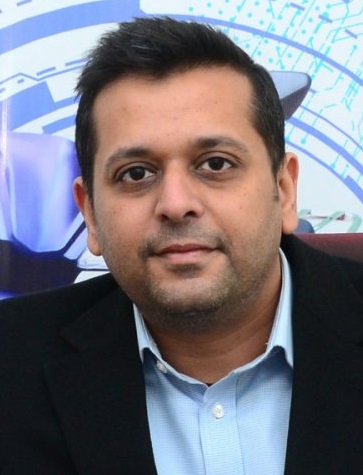Hon. Finance Minister Nirmala Sitharaman is set to present the Union Budget 2024 in Parliament on July 23. This highly anticipated event will address the needs and expectations of a diverse range of stakeholders, including common taxpayers, investors, industries, farmers, women, and major industry sectors such as Electronics, FMCG, real estate, and technology, among others.
This will be the first budget of the Modi 3.0 government and her seventh budget presentation. The budget is expected to push initiatives for various segments of the economy in line with the Viksit Bharat 2047 Vision, along with maintaining its fiscal prudence. With expectations of strategic measures that drive economic growth, innovation, and resilience. The upcoming budget holds the key to shaping a path toward prosperity and progress for our nation in the fiscal year ahead. With the Union government keen on self-reliance in semiconductor manufacturing, the market is hopeful the upcoming Budget will have some far-reaching announcements for the sector.
This compilation captures insights from industry leaders, providing a comprehensive view of the hopes and concerns that shape India’s economic landscape. Delve into the predictions and aspirations that set the stage for one of the most anticipated financial events of the year.
Here’s what our industry experts have to say:
For Electric Vehicle Industry:
For EV Industry players reckon that the reduction of custom duties on EV components and encouraging R&D in battery technology will further accelerate local production and create jobs. Some of the expectations from the Finance Minister in the upcoming budget are the announcement of the FAME-3 policy, fund allocation for charging infrastructure, incentives for localising components of batteries, implementation of a priority lending scheme and the reduction of GST rates on EV charging services, among other measures.
Mr. Vinkesh Gulati, Vice President of ASDC

“The Union Budget 2024 marks a pivotal moment for youth empowerment with its extensive initiatives. The introduction of internships for one crore youth, along with a monthly allowance and one-time assistance, offers invaluable experience and support. The revised model skill loan scheme, providing loans up to ₹7.5 lakh with government guarantees, will aid 25,000 students annually in acquiring advanced skills.
Additionally, the new employment schemes, including one month’s salary support for first-time employees and ₹3,000 per month for employers for each new hire over two years, will provide significant financial incentives. The upgrade of 1,000 ITIs will further enhance vocational training. At ASDC, we are enthusiastic about these developments and are committed to integrating these measures into our training programs, ensuring they meet industry needs and support long-term career growth for our youth.”
Mr. Kunal Arya, Co-Founder & Managing Director, ZELIO Ebikes

“As we approach the budget 2024-25, the EV industry is eagerly anticipating several key measures to drive growth and adoption. Increased subsidies will make electric vehicles more affordable for a broader range of consumers, fostering widespread adoption. Expanding the network of charging stations, especially those powered by renewable energy, is essential for supporting the EV infrastructure and addressing range anxiety. Reducing the GST on batteries and components will lower costs, making electric vehicles more accessible to the masses. Simplifying financing options for EV purchases will further encourage adoption by easing the financial burden on consumers. Promoting fleet electrification can significantly cut emissions and showcase the viability of electric vehicles for commercial use. Export incentives will help Indian EV manufacturers compete globally and expand their market reach. Additionally, skill development programs are vital for building a knowledgeable workforce to support this growing industry. Enhanced R&D grants and support for innovation in EV technology will ensure India remains at the forefront of the global EV revolution. We believe these measures will collectively propel the EV sector towards a sustainable and prosperous future.”
Dr. Irfan Khan, Founder & CEO of eBikeGo

The Indian government has been promoting the use of EVs in the country to reduce the carbon footprint and to make the country self-reliant in terms of energy. That’s common knowledge, but what is interesting is that through previous budgets, the government has announced various measures such as reducing GST rates on EVs, providing subsidies for their purchase, and promoting the use of charging infrastructure.
In Budget 2023, it is expected that the government will announce further measures to support the growth of the EV industry. This may include tax incentives for manufacturers, subsidies for charging infrastructure, and financial support for research and development of new technology. The government may also encourage to increase in the use of EVs in government vehicles, which would be a significant boost for the industry.
Additionally, the government may announce additional measures to promote the use of locally manufactured EVs to make India self-reliant in terms of energy.
In conclusion, the expectation for the EV industry in Budget 2023 of India is high and it is hoped that the government will announce measures that will help the industry to grow and reach its full potential.
Mr. Anhul Gupta, Managing Director, Okaya electric vehicles

As the country looks towards Budget 2023, we trust that the electric vehicle sector has the potential to play a major role in driving economic growth and development. We are expecting the policy makers to take steps to make EVs more affordable and accessible to the public, such as by lowering GST rates on EV spare parts and reducing input GST on EV OEMs. We also hope that the government will continue to extend support for the development of the EV sector. We believe that these measures will help to drive the widespread adoption of this clean and sustainable mode of transportation.
Mr. Aditya Munjal, Director, Hero Cycles

While the world continues to see the gaining importance for bicycles as a sector, with Europe holding more than 50% of the total global e-cycle market. Increasingly, Indians are beginning to understand the value proposition of cycles and e-cycles and are willing to switch from their existing modes of commute. This is a positive sign for the sector given that around 20 Mn bicycles are made and sold in the country.
With the upcoming Union Budget 2023-24, we are hoping for the inclusion of cycles and e-cycles in the existing schemes and policies such as PLI and FAME-II, that would help transform the bicycle industry in the country. There is huge potential within India for the cycling industry and by taking adequate measures such as providing subsidies and lowering interest rates on the purchase of an e-cycle would help in increasing adoption, contributing to the socio-economic needs of the consumer. As a nation, we are already one of the largest push-cycle makers in the world, having the capacity, talent, and intention to exponentially increase manufacturing, by making globally competitive and technologically advanced e-cycles. With severe supply chain disruptions globally; this is our opportunity to take the pole position in supplying e-cycles to the world.
Mr. Maxson Lewis, Founder, and Managing Director, Magenta Mobility

The Union Budget 2023-24 comes at a time of inflection. India and the world, in general, are trying to reinvigorate its economy post Covid and the EV ecosystem is at the cusp of disproportionate growth. India needs the right set of fiscal support to accelerate its recovery. An integrated and clean logistics ecosystem has to be a key component of the Government’s vision of a $5 trillion economy.
We expect the budget to extend the Corporate Tax Benefits for Infrastructure companies and reduce the GST from 18% to 12% for the Logistics sector. This GST reduction will go a long way in managing the inverted GST impact ailing the EV logistics sector.
Another key aspect is making finance easy for EVs. This can be done by loan mandate to Govt sector banks and financial institutions. The government can see this as a kickstart to a sustainable economy while driving demand for the automotive industry.
Mr. Rahul Jain, Director – Crayon Motors

Even when EV sales have doubled in the last year, the industry still suffers from higher initial ownership costs of EVs, which is a direct result of higher input costs. We hope the upcoming budget will reduce GST on raw materials/components, thereby accelerating India’s EV race. Because battery manufacturing in India relies heavily on imports, some duty relief could help reduce overall costs. EVs have fewer financing options and higher interest rates than ICE vehicles. The EV industry is hoping for a positive outcome from the government’s meeting with the World Bank. Aside from the PLI expansion, other state government programs such as GEDA and central government initiatives such as “Atmanirbhar Bharat” would undoubtedly benefit.
Mr. Ketan Mehta, Founder & CEO, HOP Electric Mobility

- Streamline the PLI scheme, thus bringing clarity in the provisions and related benefits
- FAME II scheme to be defined with more clarity and inclusive to ensure innovation in product development and enhance EV adoption
- Level playing field between established players and start-ups in the segment
- The applicable GST levied needs to be reformed and rationalised – anticipating a curtailment in the current GST on lithium-ion battery packs and cells from 18% to 5%.
- Further, boost in the charging infrastructure development – PPP model could be looked at more comprehensively for rapid deployment
- Promote the universal battery charging and swapping infrastructure for ease of use
For Semiconductor Industry
With the Union government keen on self-reliance in semiconductor manufacturing, the market is hopeful the upcoming Budget will have some far-reaching announcements for the sector.
Mr. Hitesh Garg, Vice President and India Country Manager at NXP Semiconductors.

“We’re thrilled about Budget 2024’s strong support for the semiconductor and electronics manufacturing sector in India. The government’s significant increase in funding for semiconductors, along with the enhanced PLI allocation under MEITY, shows a strong commitment to fostering a thriving ecosystem for technological progress.
Both semiconductors and large-scale electronics manufacturing industry, pivotal to India’s growth, has received a 52 percent increase in its 2024-25 allocation, totaling Rs 21,936.90 crore in the Union Budget. This initiative aligns with India’s ambitions to establish itself as a leading player in global electronics manufacturing. I believe these strategic measures will accelerate growth in the semiconductor industry and enhance India’s stature as a preferred hub for semiconductors.
For Renewable Energy Sector
RE sector have high expectations from financial budget this year. It is expected to reflect India’s climate commitments under COP26/COP27, with decarbonization and energy transitioning as the central themes.
Mr. Bharat Bhut, Co-Founder & Director of Goldi Solar

“This year’s Union Budget will have a significant impact on how the Renewable Sector growth momentum will be in the coming FY. In the last couple of years; the government has rolled out several policies that were crucial for the growth and adoption of clean energy in the country. The Indian Manufacturers are keenly looking forward to stability, alignment and consistency in these policies, which will eventually encourage much-needed technology innovation and scale up the production capacity to meet the PM’s Vision of ‘Make In India’. Additionally, incentive policies to promote solar exports will help India increase its share in the booming global solar markets.”
Mr. Gautam Mohanka, MD, Gautam Solar

It is expected from budget 2022 that the Solar Industry will boom with a potential investment of over USD 15 billion. As the government concentrates on electric cars, green hydrogen, manufacturing solar equipment, and meeting the ambitious 175GW renewable capacity target, the solar industry is predicted to expand in 2022. In my opinion, the Union Budget for 2022-2023 should include tax breaks and credit guarantees to encourage technology adoption in the solar power industry. Also, installing a solar system is a considerable investment, and not everyone can afford it. Well, to relax in this issue, it is also anticipated that a credit guarantee programme will be established to reduce the risk for consumers with poor credit scores. As a result, such customers will get bank funding for rooftop solar installations.
Mr. Deepak Jain, President of Grew Energy Pvt. Ltd.

Energy production and its sustainability are the two major issues of recent times. India has the potential to become ‘the green sparrow’ of the world and offer quick, affordable renewable energy solutions if we put our act together.
The government has shown its commitment for mainstreaming renewable energy by introducing policies such as Production-Linked Incentive Scheme-II (PLI-II). However, when we are talking about developing close to 100GW of solar manufacturing capacity by 2030, we need a much more conducive environment.
Domestic content requirement needs to, essentially, be made compulsory for subsidised as well as non-subsidised projects. This will immediately shoot up our growth trajectory. In the Union Budget 2023, the Government can think about centralising solar installation policies which will boost installed renewable energy capacity, in order to achieve the goal of 500GW installed capacity by 2030.
Mr. Rajeev Sharma, Chief Strategy Officer, Mitsubishi Electric India Pvt. Ltd.

I strongly believe that Indian government will prioritize the policies that can benefit the infrastructure, manufacturing sector and promote renewable energy allowing the country to realize its potential on a global scale. Manufacturing investments must be encouraged among technology providers to bring self-reliant solutions in the country. Development of new-age manufacturing skills across the top and bottom of the pyramid must be enlightened which can be a game changer for further skill development.
The overall expectation from the union budget is that it brings a steady growth for the present and future of the country.
Mr. Abhishek Pathak, Founder & CEO, Greenwear

“I expect the budget to lay down a 5-year plan to increase participation/usage of renewable energy resources by decentralized small industries and craft sector. The government should ensure growth in procurement from start-ups working with renewable energy resources. The textile industry alone has the potential to reduce carbon footprint by a huge margin along with creating jobs at the local level. The textile and Fashion industry needs urgent reforms in order to reduce polluting earth. We are taking one step at a time and currently are very small against the problem. However, we believe that the solar-vastra value chain if added with natural fibers and organic processes will create immense impact in reducing carbon footprint from the textile industry. If only 5% of Indian villages become solar charkha clusters (around 30,000), it can produce 180 Cr kgs cotton yarn which is almost 50% of India’s current cotton yarn capacity, and generate livelihood for 1.2 Cr people without migrating from their villages.”
Mr. Inder Bhambra, Country Head, BD and sales, Envision Energy India

“The industry expects that the upcoming budget will introduce a Production Linked Incentive (PLI) programme for wind turbine manufacturers, which will subsequently increase the output of domestic equipment, thereby lowering the cost of installation. The government should consider treating RECs similar to carbon credits and grant favourable tax on income derived from them. Additionally, the government must take steps to bolster India’s renewable energy capacity by bringing down GST rate on sale of wind and solar equipment. With consistent fiscal support, we are positive that the Indian renewable industry can double its renewable power capacity by 2027.”
Mr. Subin Mitra, Co-founder & CEO, Groyyo

“The government’s renewed focus on MSMEs is a welcome move. The commitment to ensure timely and adequate financing, coupled with the push for technological adoption and skill training, is precisely what MSMEs need.
Facilitating term loans without third-party collateral for MSMEs to purchase machinery and equipment will act as a catalyst, motivating young entrepreneurs to set up production units. This will significantly contribute to enhancing India’s manufacturing capabilities.
The credit guarantee scheme addresses one of the biggest pain points for small manufacturers—managing net working capital. By providing relief and financial runway, it ensures businesses can sustain and grow their operations effectively.”
Miscellanies Industry:
Dr Abhilasha Gaur, CEO, Electronics Sector Skills Council Of India (ESSCI)

The FY 2024-25 budget emphasizes continuity and forward-looking initiatives to bolster India’s growth. By focusing on employment, skilling, inclusiveness, infrastructure, innovation, and reforms, it addresses current challenges and lays the groundwork for a knowledge-based economy. Women’s workforce participation is vital for sustained growth, and creating a supportive and culturally aligned ecosystem is essential.
The budget’s commitment to skilling 20 lakh youth over five years highlights the government’s dedication to nurturing young talent. Initiatives like providing internships to 1 crore youth in top companies, with financial support, bridge the gap between education and employment.
The revision of the model skill loan scheme to facilitate loans up to ₹7.5 lakh, guaranteed by a government-promoted fund, will enable more students to access quality education and skill development programs, enhancing their employability and contributing to the country’s economic growth.
The proposed three schemes to encourage employment for new candidates will boost the country’s employment scenario. The wage subsidy for employees and support for employers will motivate them to hire fresh candidates, and linking these to EPFO registration will help formalize jobs.
At ESSCI, we are ready to support these initiatives and contribute to the nation’s progress. We align our efforts with the government’s vision to drive economic growth, social justice, and sustainable development.
Mr. Imran Kagalwala, Co-Founder at UNIX India

“In the upcoming Union Budget, consumer electronics manufacturers in India are looking forward to strategic initiatives aimed at fostering innovation and enhancing research & development (R&D) capabilities. While the government has made significant strides in supporting Indian manufacturers through initiatives like the ‘Made in India’ campaign and the PLI scheme, there is a pressing need to level the competitive playing field. Anticipations include measures such as antidumping duties to ensure fair competition against Chinese and other international companies in the industry.
Localization of components and raw materials is also critical to reducing dependency on imports and strengthening domestic manufacturing capabilities. Policy reforms and investments in skill development are expected to prepare the workforce for future challenges and opportunities in the global market. Additionally, there is eager anticipation for measures aimed at promoting exports, which could elevate India’s stature as a significant player in the international consumer electronics sector.
Mr. Sunjay J Kapur, Chairman, Sona Comstar & Deputy Chairman, CII Northern Region

“I am confident that the Union Budget 2024 will accelerate India’s sustainable growth, particularly in the manufacturing and technology space. By prioritising R&D and cross-sectoral collaboration in clean tech and mobility, the budget should aim to drive both innovation and economic growth. We anticipate robust support for electric mobility with a focus on building charging infrastructure, that will help instil confidence in consumers to embrace electric vehicles. The new EV policy has already solidified India’s position as a key EV manufacturing hub. However, rationalising GST rates on components has been a big ask and the industry expects some development in that direction. With the PLI schemes and the expected FAME-III, India is set to further enhance its domestic manufacturing capabilities significantly. I believe the upcoming budget will be a crucial enabler in achieving this vision.”
Mr. Manikanth Challa, Founder & CEO, Workruit

As the Union Budget 2024 approaches, the recruitment and startup ecosystem eagerly anticipates further advancements in technology and innovation. In recent years, the integration of AI and machine learning has revolutionized the hiring process, making it more efficient, inclusive, and accessible. Our expectations from this budget are centered on continued support for digital infrastructure and technology-driven solutions that can streamline recruitment and foster entrepreneurial growth.
Reflecting on last year’s budget, which laid a solid foundation for digital transformation by allocating funds for AI research and promoting startup ecosystems, we hope this year’s budget will build upon those initiatives. Specifically, we are looking for increased investment in AI research and development, enhancing talent acquisition, and matching candidates with the right opportunities more accurately.
However, it is evident that many colleges and educational institutions are still lacking in technology, infrastructure, and resources. For instance, several institutions struggle with outdated computer labs, limited access to high-speed internet, and insufficient training programs for both students and faculty. These gaps hinder the ability of institutions to adequately prepare students for a tech-driven job market. Last year’s budget did not allocate sufficient funds to address these critical areas, leaving a significant portion of our educational infrastructure under-equipped for the future.
Mr. N.P Ramesh, COO and Co-Founder of Orb Energy

“As we approach the Union Budget, the solar industry eagerly anticipates pivotal measures to accelerate India’s renewable energy goals. Key priorities include enhancing residential solar adoption with proposed personal income tax benefits up to 3 lakhs. This can be considered instead of current subsidy of Rs.78,000. For commercial and industrial (C&I) sectors, increasing depreciation benefits to 60-80% from the current 40% will incentivize substantial investments in solar installations, bolstering sustainability efforts across businesses.
The removal of anti-dumping duties on raw materials for solar modules is crucial to enhancing manufacturing competitiveness and reducing dependency on imports. Additionally, a proposed 7-year tax holiday for investments in PV module or solar cell production will stimulate domestic manufacturing capabilities, fostering job creation and economic growth.
These strategic measures not only strengthen India’s position in renewable energy but also pave the way for a sustainable and resilient energy future. They underscore our commitment to innovation and sustainability, ensuring a greener and more prosperous tomorrow for all.”
Mr. Prassann Daphal , CEO at Recyclekaro

“The upcoming Budget 2024 in India is expected to emphasize sustainability while addressing various sectoral demands and maintaining economic far-sightedness. Here are some key expectations for the recycling industry, particularly the battery recycling sector, which has significant expectations focused on promoting sustainability and enhancing economic viability.
Key Expectations:
– Reduction in GST: The Goods and Services Tax (GST) on waste lithium-ion batteries is expected to be lowered from 18% to 5%, in line with the GST rate on lead-acid batteries, which is a significant anticipation. With this adjustment, the inverted duty structure will be corrected and recycling processes will become more economically viable.
– Extension of FAME II Scheme: Stakeholders in the industry are pushing for the Faster Adoption and Manufacturing of Hybrid and Electric Vehicles (FAME) program to be extended and possibly expanded. This extension is essential to sustaining the momentum behind EV adoption and encouraging battery recycling.
The government’s goal of having 30% electric vehicles on the road by 2030 will only be met with the expansion of the FAME (Faster Adoption and Manufacturing of Hybrid and Electric Vehicles) program, which the electric vehicle (EV) industry is pressing for.
– Production-Linked Incentive (PLI) Scheme: A specialised PLI plan for recycling lithium-ion batteries is being pushed. With the support of this program, the recycling industry would be encouraged to grow and make a substantial contribution to India’s sustainability objectives. The government may support the expansion of the industry by expanding the PLI plan to include the whole value chain, from manufacture to recycling.
– Incentives for Green Energy Projects: It is anticipated that the budget would include further incentives for renewable energy initiatives, such as battery recycling, which is essential to the clean energy transition and the circular economy. It is envisaged that there would be incentives for creative waste management systems and simplified recycling rules.
– Investment in R&D: Another crucial expectation is higher funding for research and development of battery recycling infrastructure and technologies. Improving domestic battery recycling capabilities and lab space can help the local industry expand while lowering reliance on imports.
If these steps are taken, they will help the recycling sector as well as more general environmental and economic goals including lowering India’s dependency on imports and moving the country closer to net-zero emissions by 2070.”












